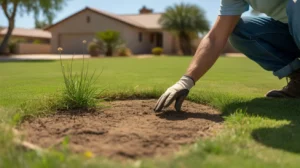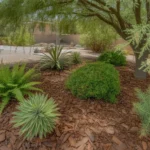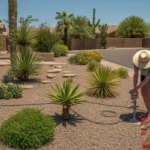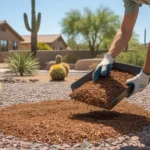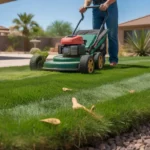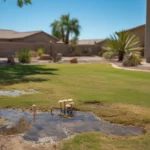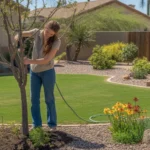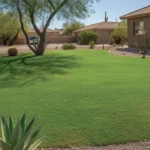Maintaining a lush, green lawn in Gilbert can feel like an uphill battle at times. Between the intense desert heat, seasonal pests, and occasional irrigation issues, even the most diligent homeowners may encounter stubborn problems. But don’t despair — with a little know-how and targeted troubleshooting, you can identify and resolve common lawn woes to keep your grass thriving year-round. In this guide, we’ll walk through practical tips to diagnose and treat the most frequent culprits behind lackluster Gilbert lawns.
Diagnosing Brown Patches and Discoloration
One of the most obvious signs of an unhappy lawn is the appearance of unsightly brown patches or overall discoloration. In Gilbert, this is often caused by a combination of factors including heat stress, insufficient watering, disease, or even pet damage. To pinpoint the underlying issue, start by assessing your watering habits. Are you providing enough moisture to combat the arid climate? Bermuda grass, a popular choice for Gilbert yards, typically needs 1 to 1.25 inches of water per week during the growing season.
If your irrigation is on point, take a closer look at the pattern and edges of the brown patches. Circular spots with dark outer rings may indicate a fungal disease like dollar spot, while patches near sidewalks or driveways could point to heat stress or salt damage. Irregular brown spots with a yellow halo often signal pest activity, especially from lawn-loving insects like chinch bugs or grubs. Once you’ve narrowed down the likely cause, you can take targeted steps to restore your grass to its verdant glory.
For disease issues, apply a fungicide specifically formulated for your grass type and follow all label instructions. Heat and salt-stressed areas may need additional TLC in the form of deep watering, soil aeration, and periodic flushing to leach out accumulated salts. If pests are to blame, treat your lawn with an appropriate insecticide and consider introducing beneficial nematodes to keep soil-dwelling bugs in check long-term. With consistent care and vigilance, those brown patches will soon be a distant memory.
Waging War on Weeds
No Gilbert lawn is immune to the occasional invasion of opportunistic weeds. These botanical interlopers can quickly spread and crowd out your grass if left unchecked. Common offenders include crabgrass, dandelions, spurge, and nutsedge — each with their own growth habits and reproductive quirks. To effectively banish weeds without harming your lawn, you need to outsmart them at their own game.
Start by focusing on prevention. A thick, well-maintained lawn is your first line of defense against weed encroachment. Mow high to encourage dense growth, and avoid scalping your grass, which can open up prime real estate for weed seeds. Apply a pre-emergent herbicide in early spring to stop annual weeds before they take hold, and consider overseeding thin areas in fall to crowd out opportunistic invaders.
When weeds do pop up, act fast. For small outbreaks, spot-treating with a selective post-emergent herbicide can nip the problem in the bud. Be sure to choose a product that targets your specific weed species without damaging your grass type. If you’re dealing with a more extensive invasion, consider a broadcast application of herbicide timed to coincide with the weeds’ active growth phase. And don’t forget the power of good old-fashioned elbow grease — regularly hand-pulling weeds before they set seed can work wonders over time. With a proactive, multi-pronged approach, you can keep your Gilbert lawn weed-free and looking its best.
Tackling Thatch and Compaction
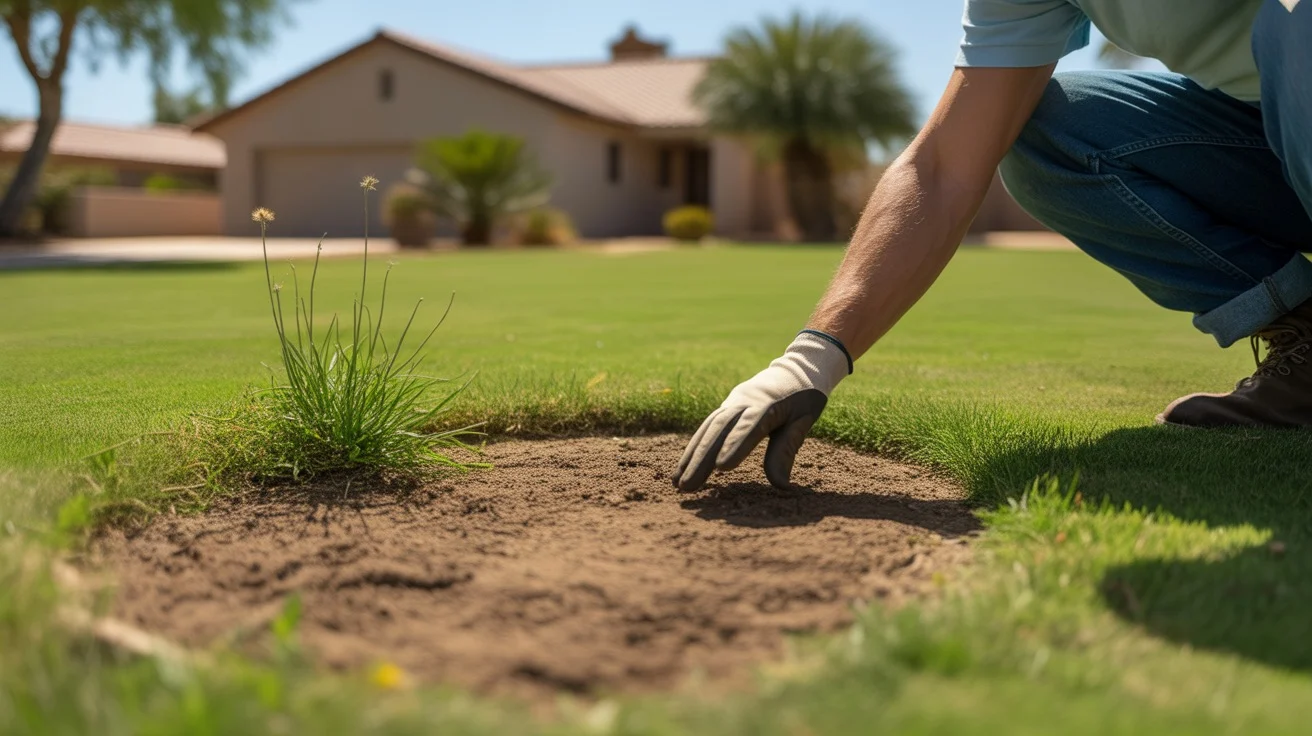
Lurking beneath the surface of your grass lies another potential troublemaker: thatch. This layer of living and dead plant material between the soil and grass blades is a normal part of a healthy lawn ecosystem. However, when thatch builds up faster than it breaks down, it can create a dense mat that impedes water, oxygen, and nutrient penetration to the roots. Over time, this can lead to a host of problems, from drought stress to disease susceptibility.
To keep thatch in check, start by ensuring your lawn care habits aren’t inadvertently contributing to the problem. Avoid over-fertilizing with nitrogen, which can fuel excessive grass growth and thatch accumulation. Stick to a balanced fertilizer regimen tailored to your grass type and soil needs. If your thatch layer exceeds 1/2 inch, it’s time to take action. For cool-season grasses, power raking in early fall can help remove excess debris and promote healthy decomposition. Warm-season grasses like Bermuda benefit from vertical mowing or dethatching in late spring or early summer when they’re actively growing.
Compaction is another underground issue that can stymie even the most well-tended Gilbert lawn. Heavy foot traffic, poor soil texture, and low organic matter can all contribute to dense, compressed soil that restricts root growth and water infiltration. To alleviate compaction, consider annual core aeration — the process of mechanically removing small plugs of soil to create channels for air, water, and nutrients. Aerate cool-season grasses in early fall and warm-season types in late spring for best results. Over time, regular aeration and topdressing with organic matter can help build soil structure and prevent compaction from taking hold.
Outsmarting Outdoor Pests
From hungry insects to burrowing mammals, plenty of pests view your lush Gilbert lawn as an all-you-can-eat buffet. Common culprits include grubs, chinch bugs, sod webworms, and even rabbits and gophers. Left unchecked, these critters can quickly turn your turf into a patchwork of damaged or dead grass. The key to effective pest control is early detection and targeted treatment.
Start by regularly inspecting your lawn for signs of distress, such as wilting, discoloration, or irregular holes. If you suspect insect activity, try the “tug test” — grab a handful of grass and tug gently. If the blades come out easily with little resistance, you may have grubs or other root-feeders at work. For above-ground pests like webworms, look for small, brown moths flying low over the grass or chewed, ragged leaf blades.
Once you’ve identified the offending pest, choose a control method that targets that species specifically. For insects, this may mean applying a granular or liquid insecticide, introducing beneficial predators like nematodes, or using pheromone traps to disrupt mating. Rabbits and other small mammals can often be deterred with physical barriers, repellents, or habitat modifications to make your yard less inviting. As with any pest problem, an integrated approach that combines cultural, biological, and chemical controls tends to yield the best long-term results. With vigilance and proactive management, you can keep your Gilbert lawn free from unwanted visitors and looking its best.
Mastering Irrigation and Watering
In Gilbert’s arid climate, proper irrigation is the cornerstone of a healthy, resilient lawn. Too little water can lead to drought stress, brown patches, and weed invasion, while too much can promote fungal growth, shallow roots, and nutrient leaching. To keep your grass thriving, it’s essential to find that Goldilocks zone of just-right moisture levels.
Start by assessing your soil type and grass species to determine the optimal watering frequency and duration. Bermuda grass, for example, typically needs 1 to 1.25 inches of water per week during the growing season, delivered in 2-3 deep, infrequent waterings. Aim to moisten the soil to a depth of 6-8 inches to encourage deep root growth. To minimize evaporation and fungal issues, water early in the morning when temperatures are cooler and winds are calmer.
Consider investing in a smart irrigation controller that adjusts watering based on local weather data and soil moisture sensors. These high-tech helpers can take the guesswork out of irrigation scheduling and help you conserve water without sacrificing lawn health. Regularly inspect your sprinkler system for leaks, broken heads, or misaligned nozzles, and make repairs promptly to avoid wasted water and uneven coverage. By fine-tuning your irrigation approach and staying on top of maintenance, you can keep your Gilbert lawn lush and water-wise all season long.
Armed with these troubleshooting tips and tricks, you’re well-equipped to tackle any challenge your Gilbert lawn may throw your way. From diagnosing brown patches to outwitting weeds and pests, a proactive, informed approach is key to maintaining a vibrant, healthy yard that’s the envy of the neighborhood. So roll up your sleeves, grab your tools, and get ready to unleash your inner lawn care pro — with a little know-how and elbow grease, that perfect patch of green is well within reach.

